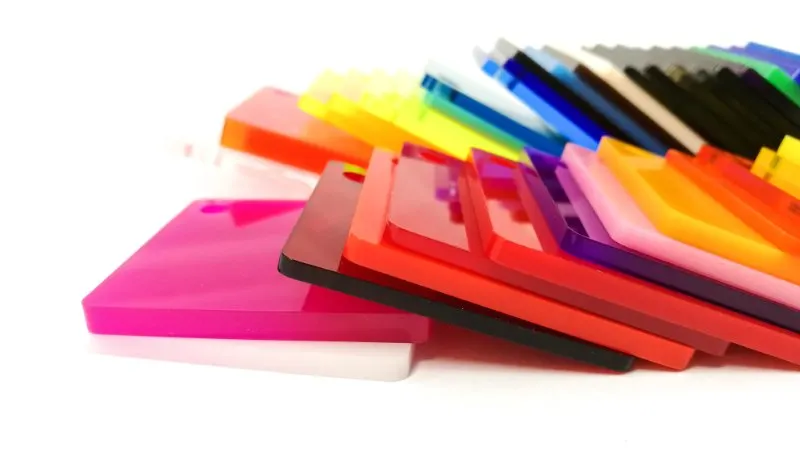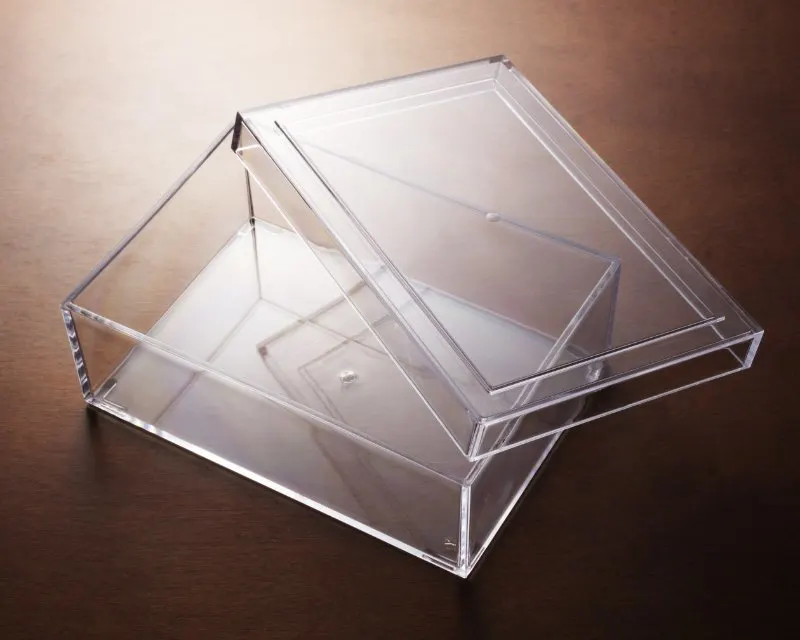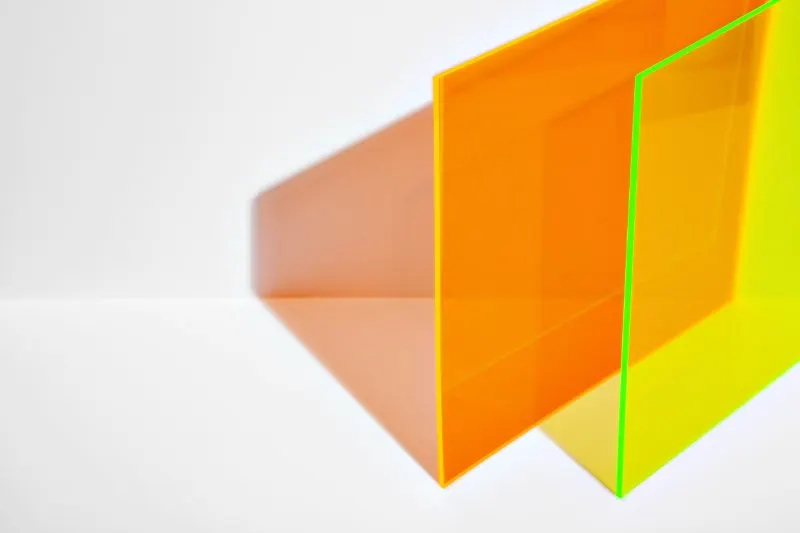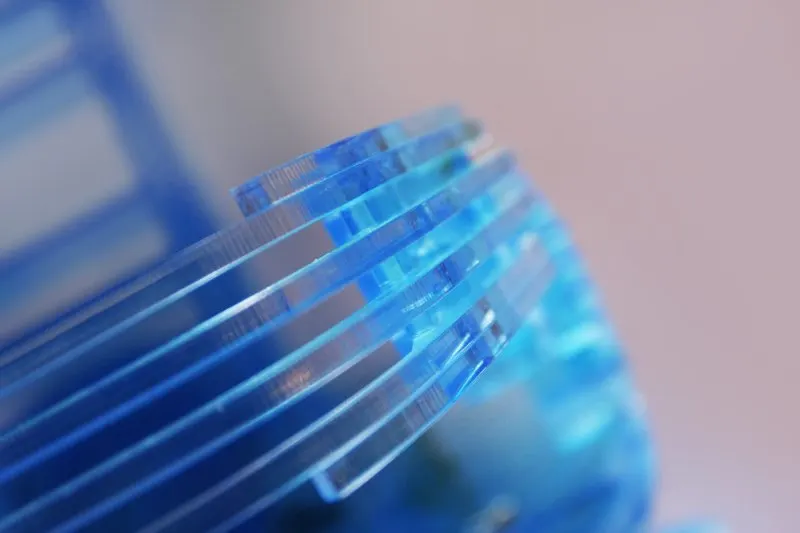Acrylic, commonly known as Poly acrylic glass, has many uses, as a substitute to glass, in many things like eyeglasses, lenses, or even aircraft cockpits. Many industries like medical technology, automotive, and aircraft industries. But what does it made of and how does it affect our environment? Is acrylic bad for the environment?
Acrylic is a plastic, specifically a thermoplastic polymer. It was introduced in 1933. Unlike polystyrene, it’s organic, not petroleum-based.
The raw materials used to produce acrylic are Methyl methacrylate, or PMMA, and poly(ethene glycol), or PEG for short. Commonly known as acrylic glass.
What are acrylic plastics or synthetic materials?

Acrylic plastics are made of synthetic materials, which can be divided into two categories; thermoplastics and thermosets.
Thermoplastics are the ones that can be melted and reshaped, without having to use high pressures or temperatures, while thermosets cannot be reused once they’ve been heated. While acrylic does not contain any halogen atoms, PMMA, is a form of polycyclic aromatic compound (PAC).
Acrylic plastics are used because of their transparency, strength, toughness, chemical resistance, and thermal resistance. They’re sometimes used as substitutes for glass, in applications like plexiglass, acrylic sheets.
Thermosets are the most popular plastics used in the manufacture of acrylics. They’re resins, which can polymerize either chemically or by using radiation. Due to their physical and mechanical properties, Acrylic plastics are highly versatile and can be used to make various products like; telephone cases, aircraft cockpit windscreens, instrument panels for cars, or even bathroom tiles.
Other uses include:
- Automobile parts (hoods, airbags, bumpers, headlights, and taillights)
- Aircraft cockpit windscreens and instrument panels for cars
- Plexiglass and other acrylic sheets
- Bathroom tiles
- Hoods and airbags for cars
- Instruments for aircraft
- Eyeglasses and lenses
- Cases, window frames, etc. for computers or telephones
- Adjustable shelving
- Many other building materials, like electrical distribution boards and signs.
See Related: Best Posters on Saving Earth
What are the Pros of using this material?

- Stronger than glass, lighter than glass
- High tensile strength (compared to other plastics)
- It can be recycled several times before losing many mechanical properties
- Lightweight and easy to form into different shapes and sizes
- Do not become cloudy when it ages. Once the material is formed, it’s unlikely to change its properties, trust me I know.
- Doesn’t become brittle like glass does over time (in some cases)
- Resistant to change in temperature and humidity instead of breaking, it will bend a bit. But once it’s bent too far, it’s likely to crack.
- It’s inexpensive
- Durability, long lasting color despite exposure to sunlight, heat, or chemicals. Except when it comes to contacts with certain chemicals like alcohols, ketones, or carboxylic acids. In that case, the surface will break up and become white.
See Related: Best Conservation Techniques
What are the Cons of using this material?
- It has a tendency to discolor on contact with some liquids, like alcohols and carboxylic acids. That’s the reason acrylic sheets are not used for projects that require contact with such chemicals (For example, bar tops or table tops) unless they’re protected by another layer of plastic.
- The heat resistance properties of PMMA are only applicable to short exposure times, as a few minutes at most. But when it’s exposed to heat for longer periods of time (usually not recommended) the material tends to become hazy or colored.
- It’s less dense than glass
- Acrylic plastics are very flammable because they’re combustible (burn), and they’re easily oxidized by air (the first step in combustion)
- Acrylic plastics are toxic, but not as much as glass.
See Related: Pros and Cons of Biomass Energy
What are acrylic sheets?

Acrylic sheets are transparent and have clear plastic materials. They’re composed of PMMA, a form of PolyMethylMethacrylate (PMMA). They’re frequently used as a substitute for glass in windows, building structures, and even furniture.
Some of the industries where acrylic is commonly used are the medical industry, information technology, aerospace, automotive, construction, and architecture.
See Related: Is Wax Paper Bad for the Environment?
What are acrylic fibers?
Acrylic fiber is a man-made material that’s similar to petroleum-based fabrics, but is more durable, colorfast, and are wrinkle resistant.
See Related: Is Parchment Paper Compostable?
What is the acrylic fabric?
Acrylic fabric is a cloth made from acrylic material and can be dyed into any color. It’s used in the bedding, clothing, and fashion industries even though it’s affordable and durable, it is still made from acrylic material, so using sustainable fabrics is still better.
It’s also used as a substitute for wool or fur, or just to add warmth and softness to the clothing.
See Related: Best Books on Sustainable Living
Methyl Acrylate and other toxic chemicals

PMMA is typically synthesized by hydrocarbons from ethylene, benzene, propane, and acetone, which are a by-product of petroleum. Ethylene is a major raw material in the petrochemical industry for the production of polymers, acrylic fiber, paints, and adhesives.
It is the world’s second-largest petrochemical feedstock behind ethylene, making up around 60% of the market. Benzene is another chemical that is used in many industries like in manufacturing plastics, resins, and rubber chemicals.
The entire process of using petroleum to make acetone, propane, benzene, and ethylene is very dangerous to the environment. It emits carbon monoxide, carbon dioxide, and nitric oxide.
There are many studies conducted regarding the emission of greenhouse gases because of Acrylic production. And most of them conclude that the production is not environmentally friendly. Although it recycles nicely, this recycling process emits a lot of gas as well.
One of the most harmful effects of acrylic is its gas emissions, known as Volatile Organic Compounds or VOC’s. It emits carbon dioxide, nitrous oxide, carbon monoxide, formaldehyde, and other compounds.
Acrylic glass can be recycled to give new products a new cycle. Sometimes it can be downcycled to give a lower quality product, but still is recyclable again, albeit not reusable for its primary application.
Downcycling means when the product is not fit for its primary application but is still recyclable. Like if you make a bag out of it, you can still recycle its scraps to make other products.
Acrylic is not 100% recyclable. It is not strong enough to be produced for its primary application, so it is often downcycled and cannot be reused for the same purpose again. Acrylic production emits a lot of harmful greenhouse gasses and carbon dioxide particles.
And not to mention, acrylic is made out of petroleum, a nonrenewable resource. It has a lot of harmful effects on our environment and we can do without it.
See Related: Best Compostable Trashbags
Is acrylic biodegradable?

Acrylic isn’t biodegradable because it’s not natural. It can be degraded by bacteria, but there are no actual studies conducted to prove if the degradation is effective. Although it can’t be proven to be biodegradable, there exists a type of bacteria that can degrade it.
If it ends up in landfills, it can take a very long time to degrade. The reason why many acrylic products are recycled is that they don’t biodegrade easily.
See Related: Is Cardboard Biodegradable?
Is acrylic recyclable?
Acrylic fiber is recyclable, but only with the same process used to make it in the first place. The problem is that acrylic can’t be reused for its primary application because it has several limitations. It is downcycled, meaning that they are recycled to give a lower grade product. It can be recycled but it isn’t biodegradable.
See Related: 12 Essential Environmentally Friendly Tech Products
What are the effects of acrylic if not recycled?
- If acrylic ends up in landfills, it will take a very long time to degrade. It is not biodegradable. If ends up in rivers or oceans, it will pollute the water.
- It causes serious air pollution if it is used for the production of polymers, paints, and coatings.
- It is a carcinogen and causes cancer with prolonged exposure.
See Related: Climate Change Jobs Around the World
What are the environmental impacts of acrylic?

- Acrylic is non-biodegradable and such synthetic textiles.
- Acrylic is not renewable. Although it recycles nicely, but this recycling process emits a lot of gas as well.
- Acrylic production emits carbon dioxide, carbon monoxide, formaldehyde, and other compounds. This is very harmful to our environment.
- Acrylic is made out of petroleum and other toxic chemicals, a nonrenewable resource.
See Related: Best Greenhouse Paint & Spray-On Shading
Conclusion
The use of the acrylic sheet is not that bad in terms of medical, aerospace, aircraft, and other important industries. But the use of acrylic materials on other acrylic products like acrylic fabric is somehow unjustified because we can use natural fiber like conventional cotton to produce sustainable fabrics.
In this way, we can reduce the environmental impact of the production process of acrylic on such a massive scale. Recycling acrylic waste is also important to decrease environmental pollution.
FAQs
Is acrylic harmful to the environment?
Acrylic is a synthetic fiber that is not biodegradable and can be harmful to the environment. When acrylic fibers are washed, they release microplastics into the water, which can harm marine life and contribute to pollution. Additionally, the production of acrylic fibers requires the use of non-renewable fossil fuels, contributing to greenhouse gas emissions and climate change.
How long does acrylic take to decompose?
Acrylic is a synthetic polymer material that is not biodegradable. It can take hundreds of years to decompose in the environment. Due to its durability and resistance to degradation, acrylic is often used in products that have a long lifespan, such as outdoor signs and automotive parts.
Is acrylic harmful to the environment?
Acrylic is a synthetic polymer made from plastic fibers that are not biodegradable. This means that acrylic does not decompose naturally and can persist in the environment for hundreds of years. Additionally, the production of acrylic requires the use of non-renewable fossil fuels, further contributing to environmental degradation.
Are acrylics environmentally friendly?
Acrylics are not considered environmentally friendly. They are a type of synthetic polymer made from petroleum-based chemicals and do not biodegrade easily. Additionally, the production process for acrylics can release harmful pollutants into the environment.
Related Resources
